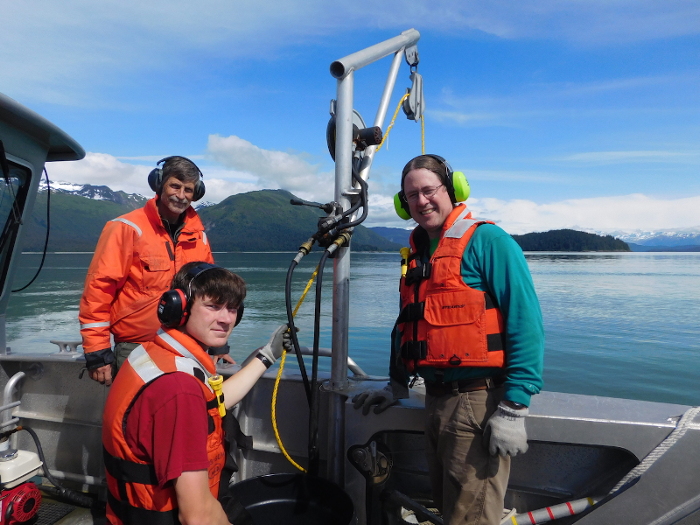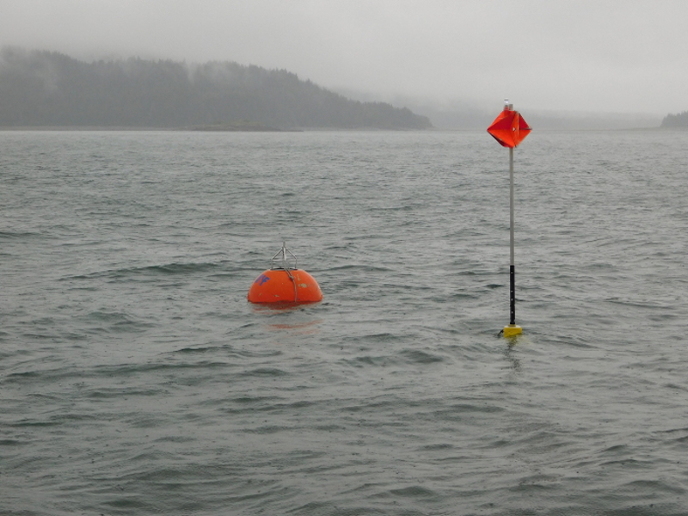Why do so many kinds of marine vertebrates like whales, sea lions, seabirds, and fishes come to Glacier Bay each year in such great abundance? If you asked a marine scientist, the short answer would be "food availability". If you start looking at what these conspicuous marine predators eat (i.e. mainly fish), and what their prey eat (e.g. smaller fish and zooplankton), and what their prey eat, it doesn't take long before you're looking closely at the phytoplankton that make up the base of the marine food web. Phytoplankton, also known as microalgae, are single-celled organisms that contain chlorophyll and require sunlight to make their own food via photosynthesis.
Considering the vast appetite of Glacier Bay's abundant animals, previous research has shown that this system has remarkable phytoplankton productivity. This summer researchers from the University of Alaska-Fairbanks and the NPS have teamed up to learn more about the oceanographic mechanisms that explain such unusually high productivity.

In particular, they're looking for oceanographic features called "internal waves". These waves, unlike surface waves, occur within the ocean and typically are not visible on the surface. But they may be an important mechanism that helps deliver dissolved nutrients from the depths up to the sunlit surface waters where they can fuel phytoplankton for a many-month-long "ocean growing season".
 A mooring surface float off Tlingit Point. The water is 200 meters deep here. NPS photo
A mooring surface float off Tlingit Point. The water is 200 meters deep here. NPS photo
The research crew recently deployed a series of short-term (2-10 days) "moorings" in Glacier Bay to try to detect internal waves. A mooring is simply a surface float attached to an anchor on the bottom, with oceanographic instruments strung along the length of the line. In this case, the instruments were very sensitive recording thermometers spaced at intervals between the surface and the bottom. Along with an instrument at the surface that accurately senses underwater currents at various depths, these thermometers can detect internal waves passing by because different parts of internal waves have slightly different temperatures.
A preliminary look at the data has already shown that the moorings recorded passing internal waves, and that they are likely regularly generated by Glacier Bay's big tides as they slosh back and forth over relatively shallow underwater "sills" that the glaciers left behind during their recent retreat over the past 250 years or so. Future work may include a longer-term mooring deployed for up to a year to further resolve these waves and more strongly link them to nutrient availability and phytoplankton production. Stay tuned!
